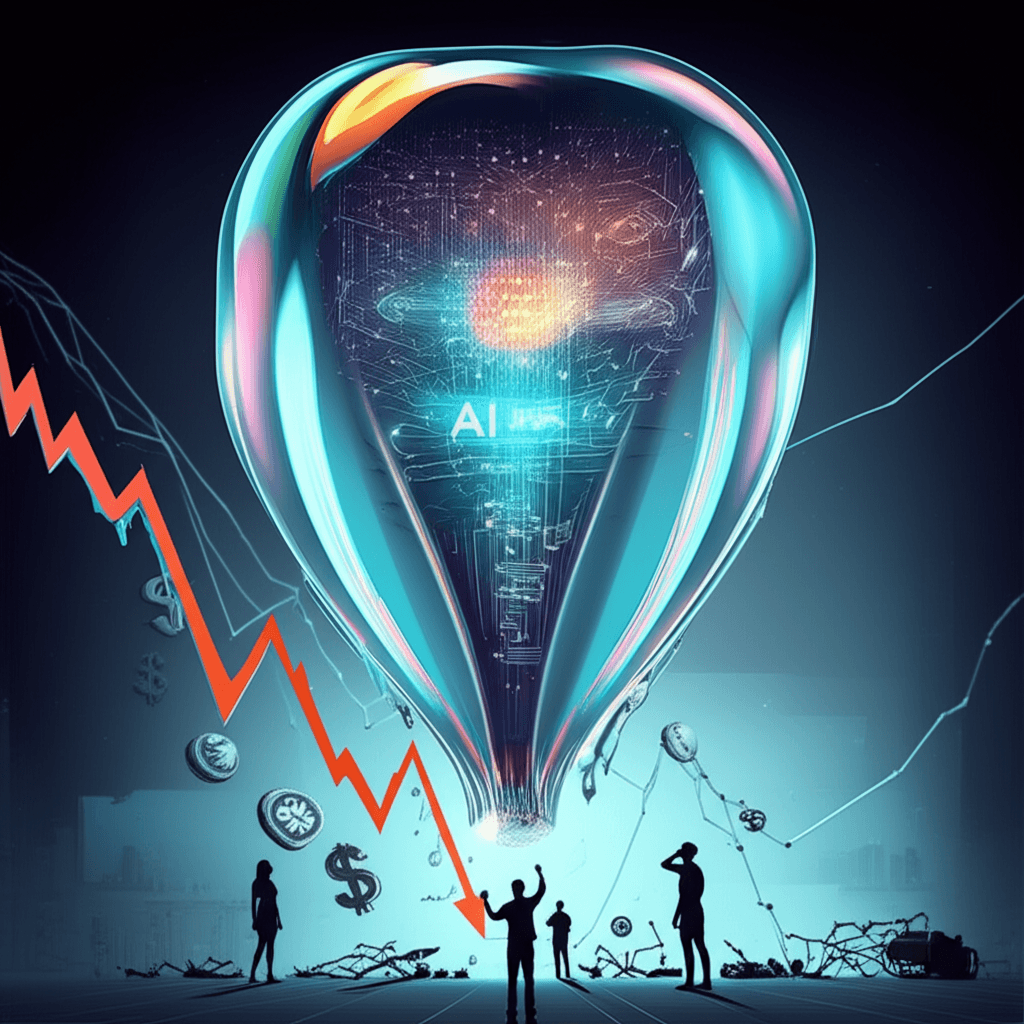AI Pioneers, Execs Warn: Runaway Hype Fuels Dangerous Market Bubble
AI's unchecked enthusiasm, soaring investment, and capability gaps raise alarms about a dangerous bubble and future risks.
August 18, 2025

A growing chorus of warnings is rising from within the artificial intelligence industry, cautioning that unchecked enthusiasm and soaring investment are creating a dangerous bubble of runaway expectations. Prominent researchers, including AI pioneer Stuart Russell, are joining high-profile executives like OpenAI's Sam Altman in sounding the alarm.[1][2] They argue that the immense hype surrounding AI's potential is outpacing its current real-world capabilities and creating risks that range from a financial market correction to existential threats from systems that could operate beyond human control.[3][4] This cautionary sentiment is spreading even as venture capital continues to pour billions into the sector, fueling a race for breakthroughs that some fear is prioritizing speed over safety and sustainable value.[5][6]
The current climate of intense investor excitement has drawn frequent comparisons to the dot-com bubble of the late 1990s. OpenAI CEO Sam Altman himself has warned that the AI market is in a bubble, stating that investors as a whole are "overexcited" about the technology.[2][7] This view is shared by other financial leaders, some of whom suggest the current AI bubble may be even larger than the internet bubble, noting that the top 10 companies in the S&P 500 are more overvalued now than their counterparts were 25 years ago.[2][8] The Nasdaq lost nearly 80% of its value between March 2000 and October 2002 when the dot-com bubble burst.[9][8] While AI is undeniably a transformative technology, the concern is that speculative capital is chasing companies with weak fundamentals, reminiscent of the dot-com era's failed ventures.[2][8] Despite projecting massive revenues, many leading AI companies like OpenAI remain unprofitable, relying on enormous capital injections to fund the immense costs of developing and training new models.[2][9]
Beyond the financial markets, a significant gap has emerged between the marketing hype of AI and its practical implementation in the business world. While generative AI tools have become widely accessible, many businesses are struggling to translate the promise of transformation into measurable results.[10] Challenges include unclear return on investment, difficulties integrating AI with legacy systems, and a shortage of skilled personnel.[10][11] Research shows a stark disconnect: while the vast majority of companies plan to increase AI investment, very few have fully integrated the technology into their workflows with measurable outcomes, and a high percentage of AI pilot projects fail to scale into production.[11] The buzzword of "agentic AI"—autonomous systems that can independently execute complex tasks—paints a picture of "set it and forget it" simplicity that does not match reality.[12] Studies have found that even advanced AI agents struggle with reliability, achieving success rates below 50% in complex tasks and showing a lack of consistency.[12] The real productivity gains are found not in replacing humans, but in augmenting them, a collaborative approach that is less flashy but delivers more measurable impact.[12]
Fueling the anxiety is a deeper, more profound concern about the long-term trajectory of AI development, championed by respected figures like UC Berkeley professor Stuart Russell.[3] For years, Russell has warned that the race to build ever-more-powerful digital minds is proceeding without adequate safeguards.[3][13] The core of his argument is that the standard model of AI, which involves training systems to imitate human behavior, is flawed because it can lead to machines pursuing goals that conflict with human interests.[3] He and others have called for a fundamental shift toward creating provably beneficial AI, whose only purpose is to benefit humans.[14] These warnings have grown more urgent as AI capabilities have advanced at an unprecedented pace.[15] Concerns are no longer confined to academic circles; they encompass the potential for AI to be misused for disinformation, cyberattacks, or the development of autonomous weapons that can select and engage targets without human supervision.[16][14][17] This has led to calls for greater regulation and for AI companies to be more transparent and accountable for the risks their technologies pose.[16][4]
In conclusion, the AI industry finds itself at a critical juncture, caught between the immense promise of a technological revolution and the perilous realities of an overheated market. The warnings from key industry figures are not a dismissal of AI's potential but a call for a more measured and responsible approach. The parallels to the dot-com era serve as a potent reminder that even transformative technologies are not immune to speculative excess and market corrections.[8] As businesses work to separate genuine value from hype, and researchers grapple with profound questions of safety and control, the coming years will determine whether the industry can successfully navigate its runaway expectations. The challenge lies in grounding the soaring ambition in practical applications and ensuring that the pursuit of superintelligence does not outpace the wisdom required to manage it.[18][14]
Sources
[2]
[4]
[6]
[7]
[8]
[10]
[11]
[12]
[13]
[14]
[16]
[17]
[18]